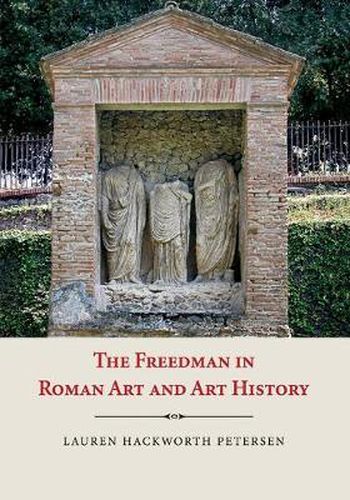Readings Newsletter
Become a Readings Member to make your shopping experience even easier.
Sign in or sign up for free!
You’re not far away from qualifying for FREE standard shipping within Australia
You’ve qualified for FREE standard shipping within Australia
The cart is loading…






From monumental tombs and domestic decoration, to acts of benefaction and portraits of ancestors, Roman freed slaves, or freedmen, were prodigious patrons of art and architecture. Traditionally, however, the history of Roman art has been told primarily through the monumental remains of the emperors and ancient writers who worked in their circles. In this study, Lauren Petersen critically investigates the notion of ‘freedman art’ in scholarship, dependent as it is on elite-authored texts that are filled with hyperbole and stereotypes of freedmen, such as the memorable fictional character Trimalchio, a boorish ex-slave in Petronius’ Satyricon. She emphasizes integrated visual ensembles within defined historical and social contexts and aims to show how material culture can reflect preoccupations that were prevalent throughout Roman society. Interdisciplinary in scope, this book explores the many ways that monuments and artistic commissions by freedmen spoke to a much more complex reality than that presented in literature.
$9.00 standard shipping within Australia
FREE standard shipping within Australia for orders over $100.00
Express & International shipping calculated at checkout
From monumental tombs and domestic decoration, to acts of benefaction and portraits of ancestors, Roman freed slaves, or freedmen, were prodigious patrons of art and architecture. Traditionally, however, the history of Roman art has been told primarily through the monumental remains of the emperors and ancient writers who worked in their circles. In this study, Lauren Petersen critically investigates the notion of ‘freedman art’ in scholarship, dependent as it is on elite-authored texts that are filled with hyperbole and stereotypes of freedmen, such as the memorable fictional character Trimalchio, a boorish ex-slave in Petronius’ Satyricon. She emphasizes integrated visual ensembles within defined historical and social contexts and aims to show how material culture can reflect preoccupations that were prevalent throughout Roman society. Interdisciplinary in scope, this book explores the many ways that monuments and artistic commissions by freedmen spoke to a much more complex reality than that presented in literature.